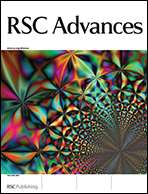CO2 mineralization into different polymorphs of CaCO3 using an aqueous-CO2 system
Abstract
This study examines a sequestration of CO2 using sterically hindered 2-amino 2-(hydroxymethyl)-1,3-propanediol in the presence and absence of the carbonic anhydrase enzyme to obtain a CaCO3 with a polymorphic crystal composition that depended on the pH, temperature, or mole ratio of the reactants in the reaction mixture. The CO2 loading capacity of amine absorbent was 8.5 fold higher than CO2 saturated in water. The amounts of CO2 and CaCO3 precipitated were quantified using ion-selective electrodes and ion chromatography, respectively. Interestingly, each of the three polymorphs of CaCO3 (calcite, aragonite, and vaterite) were obtained in pure form, regardless of the presence of the enzyme, and reaction parameters, or the presence of additives in the reaction medium. Mg2+ was found to promote the formation of one of the polymorphs, aragonite. The purities and characteristics of the three polymorphs were verified and quantified by XRD. The carbonization yield, surface morphologies and specific characteristics of the three phases were revealed by IC, FE-SEM, FT-IR, and XPS studies. This study suggests conversion of absorbed CO2 to three polymorphs of CaCO3 could be considered as a potential mineralization process.


 Please wait while we load your content...
Please wait while we load your content...